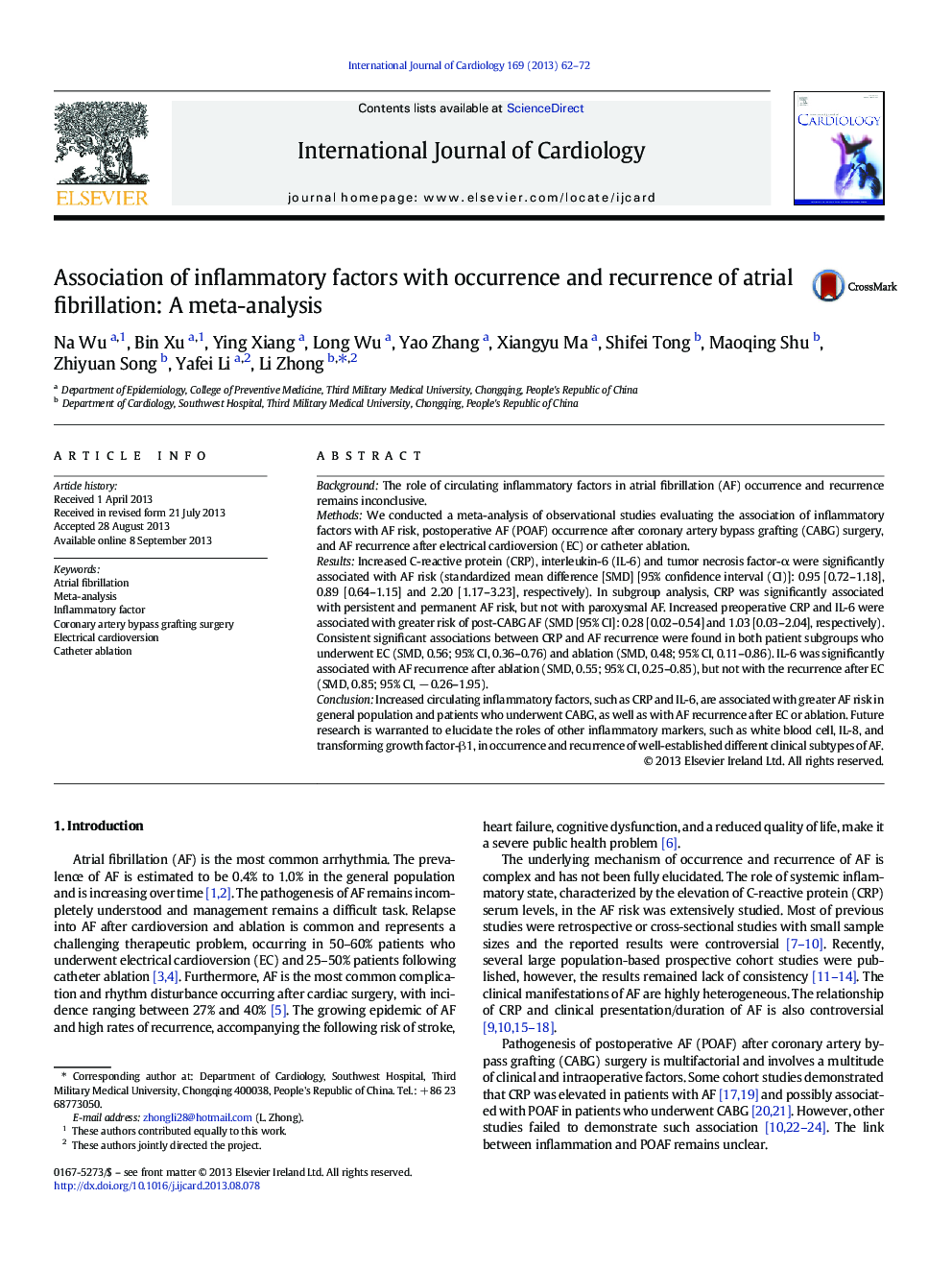| Article ID | Journal | Published Year | Pages | File Type |
|---|---|---|---|---|
| 2929537 | International Journal of Cardiology | 2013 | 11 Pages |
BackgroundThe role of circulating inflammatory factors in atrial fibrillation (AF) occurrence and recurrence remains inconclusive.MethodsWe conducted a meta-analysis of observational studies evaluating the association of inflammatory factors with AF risk, postoperative AF (POAF) occurrence after coronary artery bypass grafting (CABG) surgery, and AF recurrence after electrical cardioversion (EC) or catheter ablation.ResultsIncreased C-reactive protein (CRP), interleukin-6 (IL-6) and tumor necrosis factor-α were significantly associated with AF risk (standardized mean difference [SMD] [95% confidence interval (CI)]: 0.95 [0.72–1.18], 0.89 [0.64–1.15] and 2.20 [1.17–3.23], respectively). In subgroup analysis, CRP was significantly associated with persistent and permanent AF risk, but not with paroxysmal AF. Increased preoperative CRP and IL-6 were associated with greater risk of post-CABG AF (SMD [95% CI]: 0.28 [0.02–0.54] and 1.03 [0.03–2.04], respectively). Consistent significant associations between CRP and AF recurrence were found in both patient subgroups who underwent EC (SMD, 0.56; 95% CI, 0.36–0.76) and ablation (SMD, 0.48; 95% CI, 0.11–0.86). IL-6 was significantly associated with AF recurrence after ablation (SMD, 0.55; 95% CI, 0.25–0.85), but not with the recurrence after EC (SMD, 0.85; 95% CI, − 0.26–1.95).ConclusionIncreased circulating inflammatory factors, such as CRP and IL-6, are associated with greater AF risk in general population and patients who underwent CABG, as well as with AF recurrence after EC or ablation. Future research is warranted to elucidate the roles of other inflammatory markers, such as white blood cell, IL-8, and transforming growth factor-β1, in occurrence and recurrence of well-established different clinical subtypes of AF.
